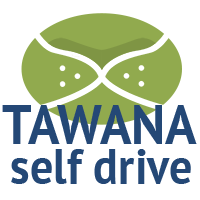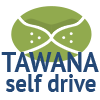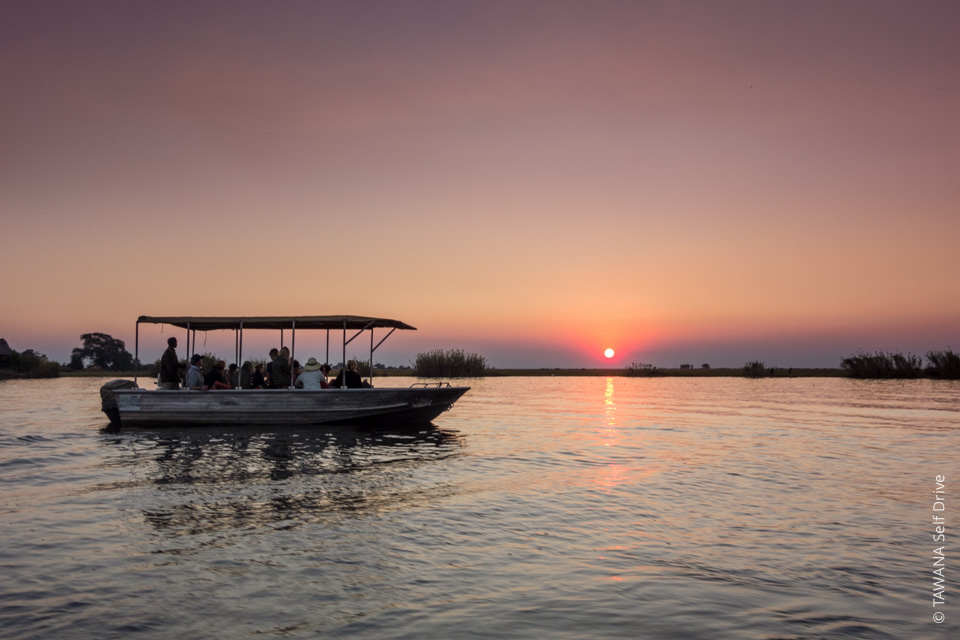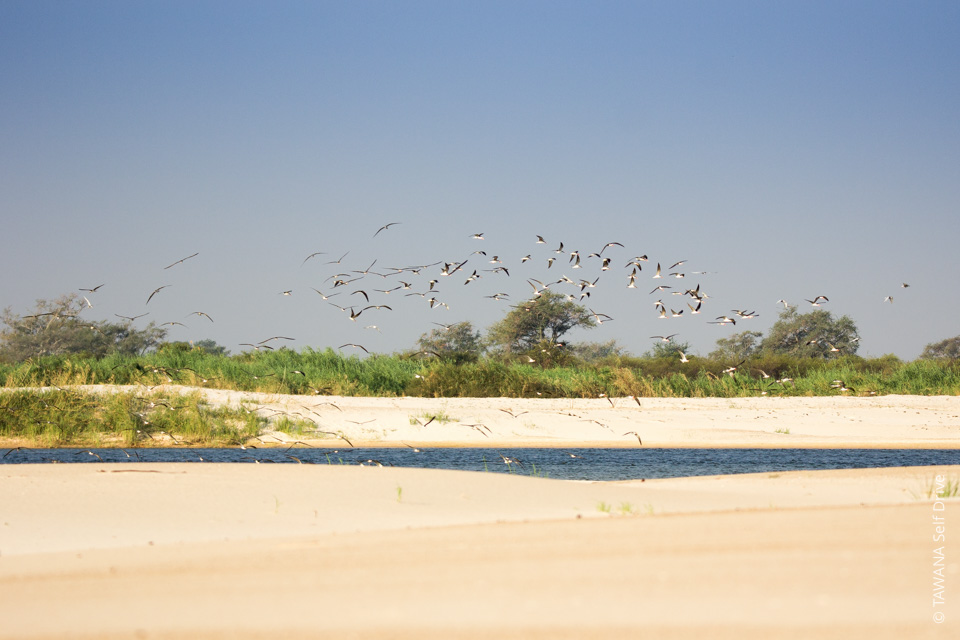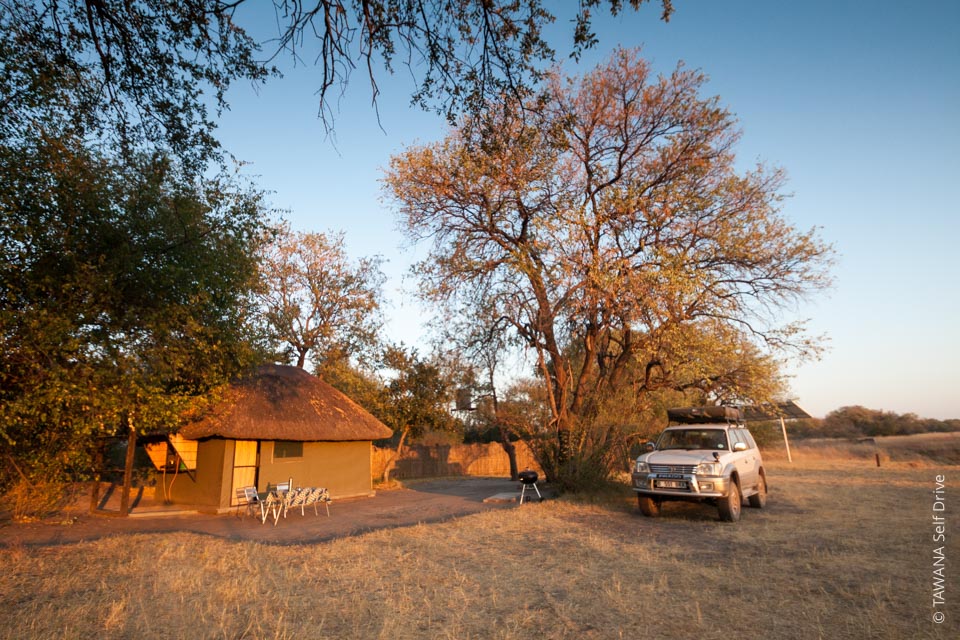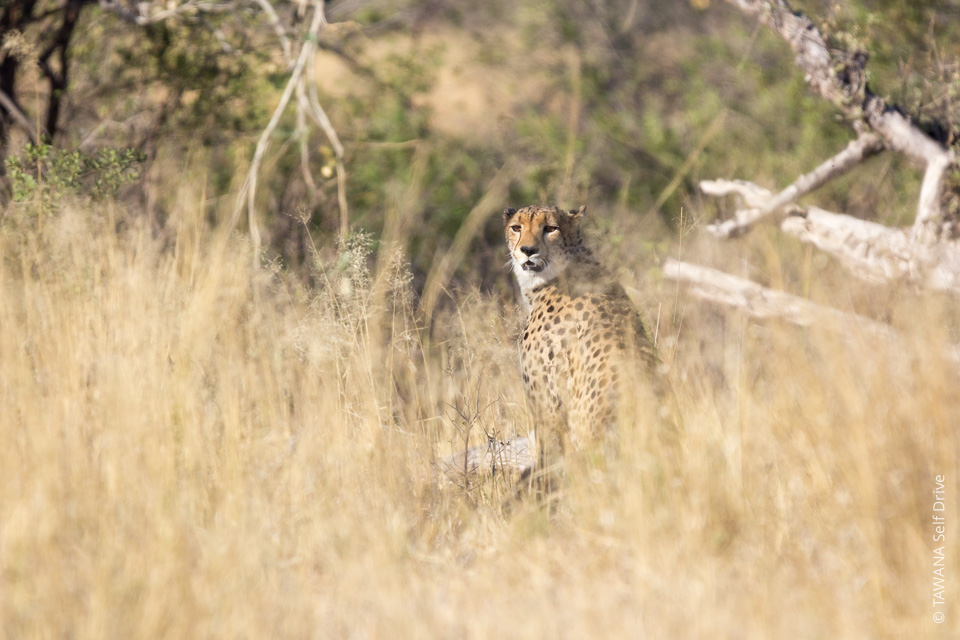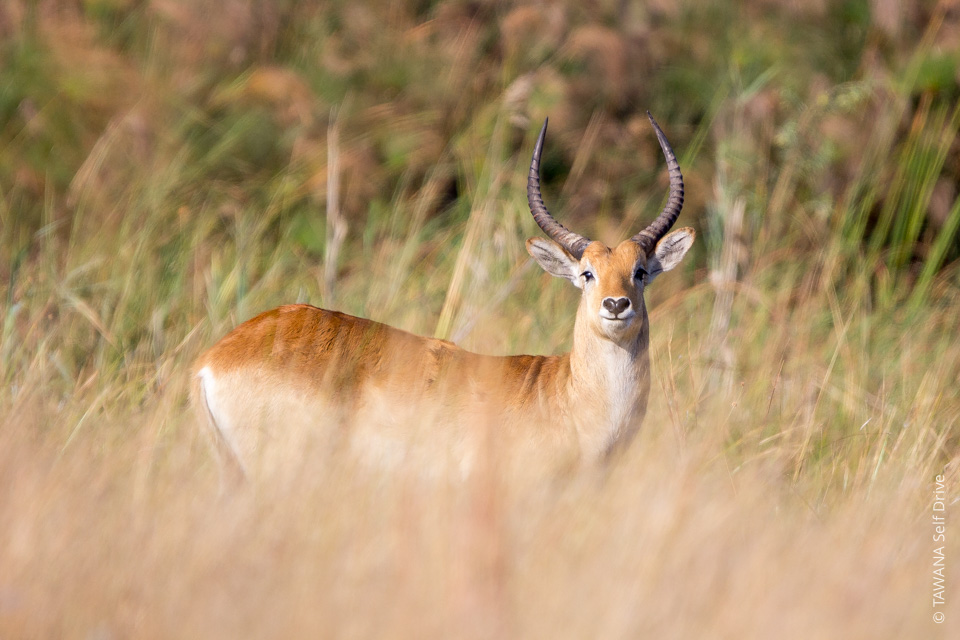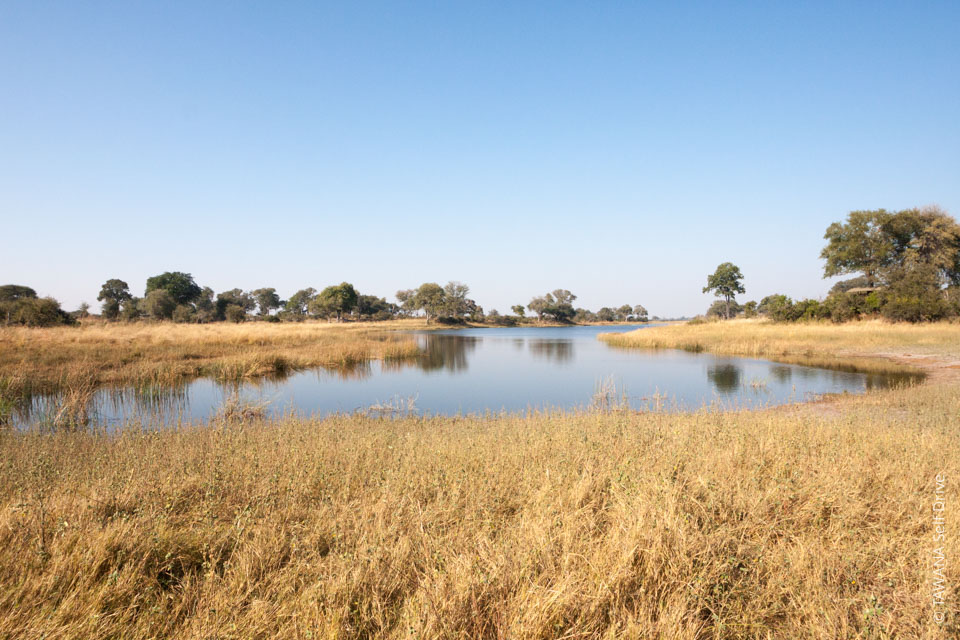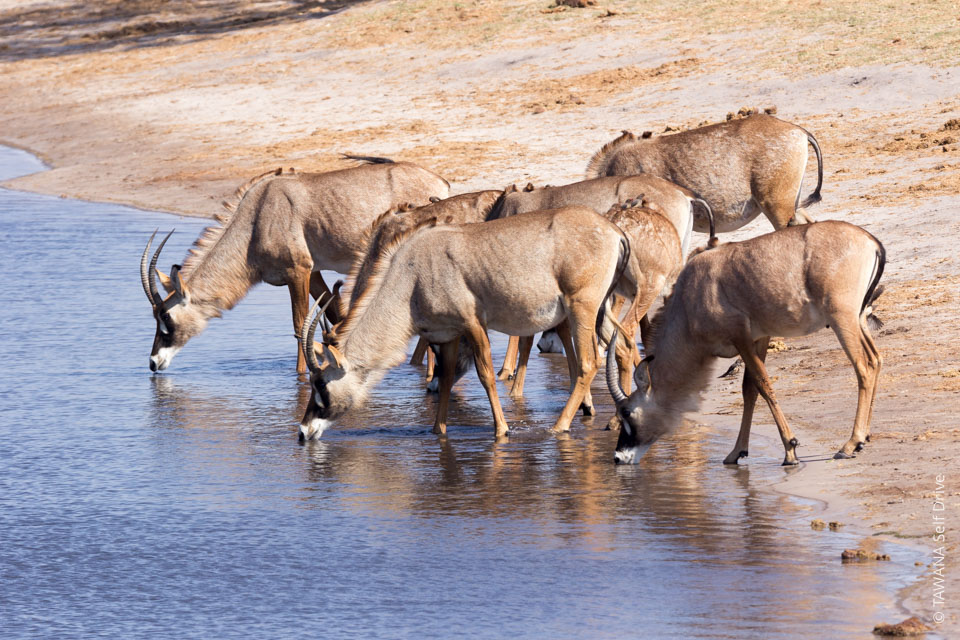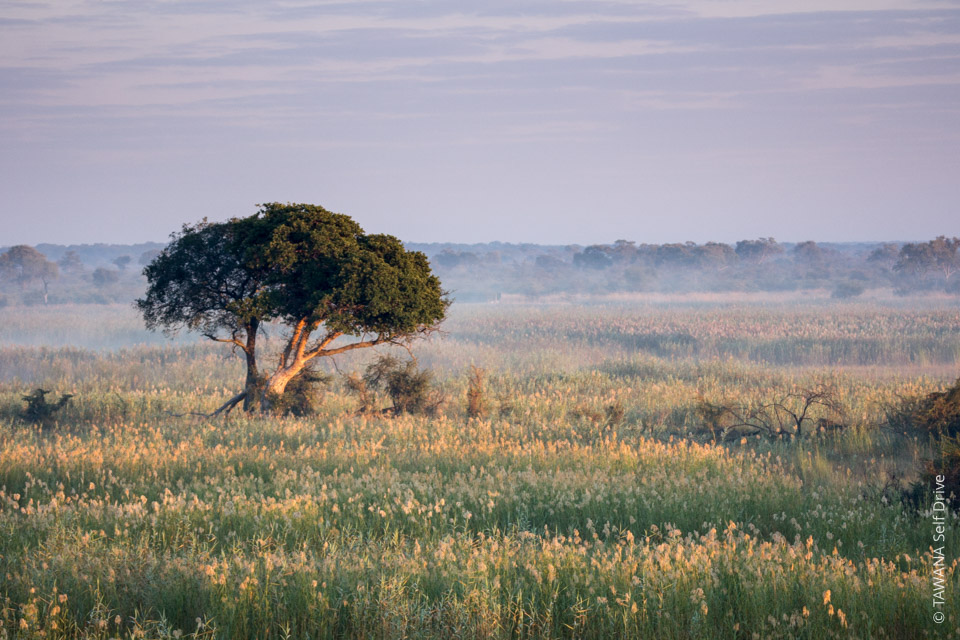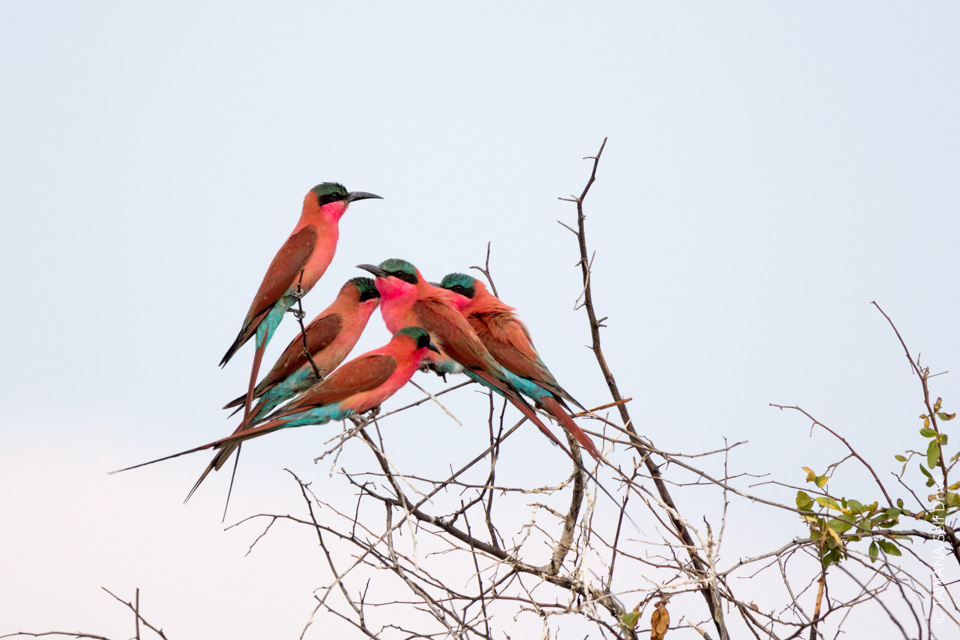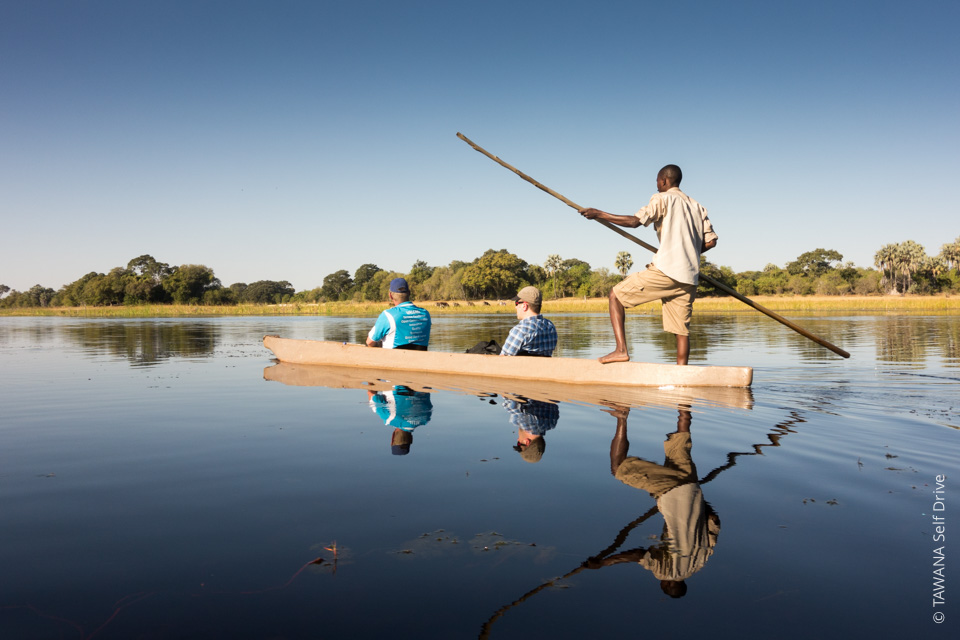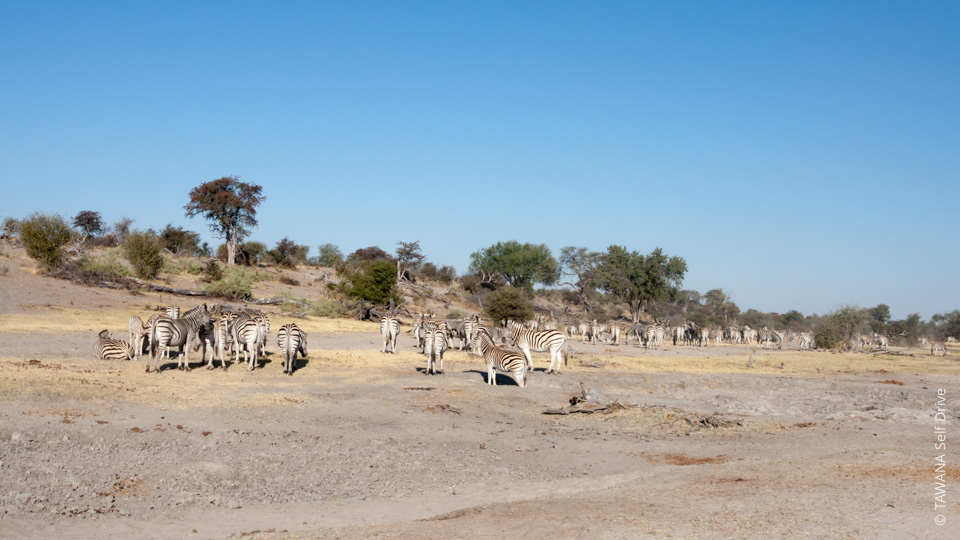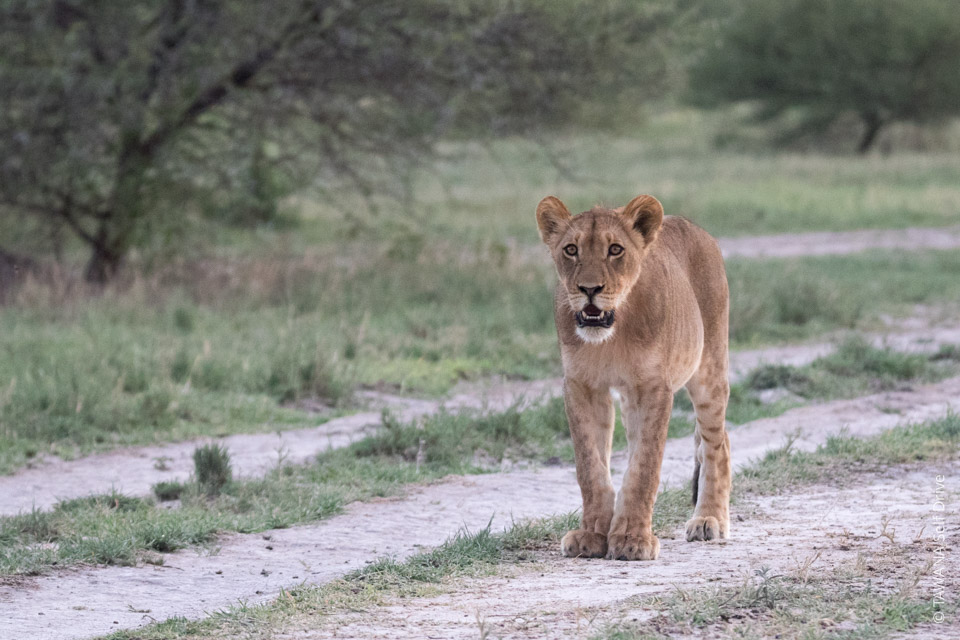
Carmin Bee-eater, Zambezi River, Namibia
Self-Drive Safari Itinerary in Botswana
The Birds route
Combine the best of Botswana and Namibia’s Caprivi in a legendary road trip along beautiful rivers and ancient salt lakes
The Birds Route, an amazing road trip through Botswana and Namibia
The birds route will lead you through the idyllic marshes of Namibia and Botswana, along the Kwando and Okavango rivers and continuing into the depths of the Kalahari to the discovery of salt pans.
From the Mahango, the Caprivi strip offers splendid landscapes where a myriad of birds live in a lush vegetation that also attracts an incredibly varied fauna. The panhandle is itself punctuated with real small terrestrial paradise as well as breathtaking landscapes. The pans, a land of migration for many herbivores and birds, perfectly complement this road trip in Namibia and Botswana.
Detailed Itinerary
KASANE
This road trip through Namibia and Botswana can start in Kasane or Maun, depending your flights.
The small town of Kasane enjoys an exceptional location at the crossroads of the four countries: Botswana, Namibia, Zambia and Zimbabwe and the gateway to the Chobe National Park, one of the most attractive in southern Africa.
Kasane is an excellent departure point for the Bird route. It has an international airport with scheduled flights from Johannesburg in South Africa. The city has several supermarkets/shops, ticket machines, gas stations which allow a way to resupply before taking the road.
Kasane is a calm and charming town which is good for resting days and has several activities, not forgetting the not to be missed Chobe Cruise which is the best way to have first contact with Botswana’s wildlife.
Accommodation
There are many ways of staying in Kasane and around. Lodges, self-catering units, bushcamps and campsites are all available in the area.
The Caprivi strip is a narrow piece of land belonging to Namibia and separating Botswana from Angola.
This region is in many ways more like its neighbor’s than the rest of Namibia. Bordered by rivers, it offers lush vegetation and a nature conducive to the development of important fauna and avifauna. The population is also denser there than elsewhere and the roads are punctuated by many villages where travelers are often warmly welcomed.
In this narrow territory there are 5 protected areas: Nkasa Rupara, Mudumu, Bwabwata, Popa falls and Mahango.
KATIMA MULILO AND THE NAMIBIAN ZAMBEZI AREA
Located between Zambezi and the Chobe river, the eastern extremity of Caprivi is made up of wetlands, alternating floodplains, islands and canals. This environment close to the one found in the Okavango delta is no longer inhabited by large mammals. On the other hand, the avifauna is spectacular, with skimmers nesting on the sandy islands, an impressive number of king fishers of all species and colonies of carmine bee-eaters.
Established on the banks of Zambezi, Katima Mulilo is the capital of Caprivi. It is a charming and comfortable town where it is good to spend the day between its market and craft center, whilst you relax on the banks of the river indulge in fishing or let yourself be enticed by a few days aboard a houseboat.
NKASA RUPARA NATIONAL PARK
Rupara is the closest Namibian reserve to Botswana, bordered to the east by the Linyanti river and to the west by the Kwando river. It stands out as the largest protected wetland in Namibia. The landscapes of Rupara are mainly made of canals and wooded islands, the largest and most emblematic of which are Nkasa and Lupala. During the dry season these islands are accessible by road but surrounded by water during the rainy season.
The complex forms a magnificent marsh and little frequented by tourists. Here birds proliferate and there are many species attracted by water such as elephants, crocodiles and hippos. More unexpectedly, Rupara is home to a stable population of lions who are very interested in the buffalo herds of the island.
MUDUMU NATIONAL PARK
Mudumu reserve is located at the north of Rupara park and has an environment close to its neighbor. Mudumu’s main attraction remains as the banks of the Kwando river where elephants abound when they migrate between Botswana, Zambia, Angola and Zimbabwe.
Its landscape of floodplains and forest also attracts buffaloes, lions, leopards, giraffes and all kinds of antelopes including the rare sitatungas. Its canals are home to hippos, crocodiles and otters. Mudumu is also a paradise for birds with its 430 listed species.
Accommodation
The eastern half of the Caprivi Strip offers a variety of accommodation options whether inside or outside the parks, in a lodge, bush camp or camping.
Supplying
Restaurants, supermarkets, markets, distributors, gas stations are available in Katima where it is essential to make a full supply before crossing the Caprivi strip. There is a small grocery store in Kongola as well as a gas station, but the availability of cash is not guaranteed at the only distributor in the city.
Covering the narrowest and longest strip of Caprivi, Bwabwata includes the former Caprivi park and the Mahango reserve. After being occupied by the south African army until independence in 1990, this region began to be managed as a protected area despite the presence of its 5000 inhabitants.
That is why the management of this park integrates the needs of the local population and has led to the creation of various areas including the conservation area to the west along the Okavango river (Mahango and Buffalo core) a central multi-use area and a conservation area to the east ( Kwando core).
Bwabwata’s landscapes range from vast floodplains, banks of lush vegetation to drier woodland with large baobabs. Bwabwata is an obligatory passage to reach Angola and it is home to a very high concentration of elephants but also buffaloes and antelopes, attracting a relatively large population of predators: lions, leopards, hyenas and wild dogs. Along the rivers hippos and antelopes proliferate as well as the sitatungas, reedbucks or groups of Lechwe are easily encountered.
Bwabwata is also a hotspot for ornithology and will delight all the bird lovers with the presence of the skimmers, parrots, narina trogons and the rare pel’s fishing owl.
BWABWATA KWANDO CORE
On the east side of the Bwabwata, the Susuwe Triangle is the richest area/region in fauna and avifauna. This territory is impressive by the diversity of wild animals and magnificent views overlooking a typical wetland environment. As such the horseshoe shaped lagoon is a must to see, it attracts countless elephants who drink and bathe each afternoon offering a show worthy of the banks of Chobe.
This part of Bwabwata is not only home to many herbivores and a myriad of birds but also lions, leopards, cheetahs, wildogs and hyenas making the whole area particularly interesting to explore.
BWABWATA BUFFALO CORE & MAHANGO
From the town of Kongola, the access to the west of the Bwabwata consists of a long straight line without much interest to the small town of Divindu. The popa falls are located nearby and represent a cool, friendly place for a picnic.
Here, Buffalo core area is the most densely populated area for mammals. Large herds of black Hippotragus and roan concentrate on the banks of the river, buffaloes and the kudus are also particularly well represented, supporting a notable population of lions. Be careful, elephants can be more nervous than in other parts of the Caprivi, it is recommended to be particularly vigilant.
On the other side of the river, Mahango is a small reserve along the Okavango much appreciated by bird lovers. The walk along the river allows you to discover splendid baobabs and meet hippos, Lechwe, elephants or even roan antelopes. Here the tracks are easy to navigate, and the 4X4 vehicle is not mandatory.
This is where your road trip in Namibia ends but the adventure continues in Botswana!
Accommodation
Along the Okavango river, lodges, bush camps and campsites follow one another from Divindu to Mohembo.
Supplying
The small town of Divundu has a small grocery store, gas station and ATM machines.
Stretching for 70 km, this region of Botswana which precedes the Okavango Delta consists of a deep channel where the hippos live happily, lagoons covered with water lilies and marshes dressed in papyrus and reeds where birds roam in abundance. For fishing enthusiasts, the panhandle is one of the best places to catch the famous tiger fish.
SHAKAWE – GUMA LAGOON
Between Shakawe and Guma Lagoon, life is a long quiet river punctuated with various points of interests to include in the course according to its preferences.
Nxamaseri
The environment of this small village deserves a visit. Here lies the canal of the same name and splendid floodplains covered with a carpet of impeccable grass where only a few palm trees break the horizon. The channel lies north of the point where the Okavango river begins to divide into the delta. While the wildlife is scarcer outside hippos and crocodiles, birds abound, and a colony of carmine wasps may be observed from September to December.
Tsodilo Hills
Listed as a UNESCO world heritage site, the Tsodilo hills are home to more than 4,500 rock paintings on a small area. It is a magical and fascinating place to explore, promising beautiful hikes.
Guma Lagoon
Located along the banks of the river on the northwest side of the Okavango delta, Guma Lagoon camp is a true paradise for fishermen and birdwatchers but also the perfect place to relax and enjoy wonderful mokoro rides, the traditional canoe which was the mode of transport for the first inhabitants of the Okavango, the Bayei and Banoka. A must-do in Botswana!
Road
The Panhandle is quite easy to access. There is a main tared road between Shakawe and Maun then sand tracks allow you to reach the banks of the river. Access to Guma Lagoon can be a bit technical during the dry season but camp support can be organized from Etsha.
Accommodation
The road along the Panhandle is punctuated by well established lodges and camps that provide accommodation at all prices.
Supplying
Shakawe has ATM’s, supermarket’s and gas stations. Sepopa and Seronga will provide basic supplies.
Belonging to the Great Lakes region, Nxai Pan and Makgadikgadi national parks are like siblings (brother and sister). Their similarity lies in their landscapes alternating salty potholes and shrub plains, and in the fact that they are both on the migratory path of large herbivores.
The fauna circulates freely between the two spaces that also have some specificity to offer: on the north side the Baines Baobab and pans are covered with grasses, whilst on the other side there is the Boteti river and desolated pans.
MAKGADIKGADI NP
The Boteti River which flows along the west of Makgadikgadi National Park is drained by the Okavango floods and is a crucial source of water for animals living or migrating in this desert area. As in Savuti, it remained dry for many years, leaving only a few permanent ponds here and there. The water having returned since 2009, wild life is in full swing again in this magnificent setting allowing you to observe the traditional fauna of the African savannas: elephants, giraffes, zebras, lions, as well as a myriad of birds.
Going a little deeper into the park, you can discover an environment in total opposition to the green banks of the river. The Ntwetwe pan is one of the largest in the region and looks like a real desert during the dry season. Its cracked expanse impresses with its whiteness and attracts specific fauna, adapted to these arid conditions, such as ostriches, oryxes, meerkats, and even the very rare brown hyena.
Road
Access to Makgadikgadi is possible through the Khumaga Gate to the west side, which requires crossing the Boteti River by ferry, or through the Phuduhudu Gate to the north. The park’s tracks are mainly composed of deep sand which can make driving difficult during the dry season.
Accommodation
There are two campsites inside the park. Kumaga is the most comfortable, Tree Island is the wildest and closest to the salt pans. Other accommodation solutions offering chalets or campsites are available on the outskirts such as Boteti river camp, Planet Baobab or Gweta Lodge. High-end lodges are also an option in this region of Botswana.
Supplying
Not available outside Gweta, Maun or Nata. Be aware that the gas station of Gweta is open again but still not reliable.
NXAI PAN NP
Nxai Pan is an interesting destination in many ways. The park is home to a permanent fauna made up of lions, giraffes, cheetahs and species adapted to more arid environments such as springbok, bat-eared fox or jackal. It is also a transit point for migratory animals that crowd around the water point as soon as the first rains arrive. During this period, it is possible to observe zebras by the thousands but also large herds of oryx and elephants.
Apart from its fauna, the park is also known for the famous «Baines Baobab» which the name is taken from the explorer of the same name, who immortalized these majestic trees planted at the edge of a large basin in one of his paintings.
Road
From Kasane, you need a day’s drive to reach Nxai Pan NP. The tar road gives way to sandy tracks after the passage of the door. During the dry season, driving to the baobabs and South Camp can be particularly challenging but then driving on the pans is very easy. In the wet season, the difficulties are reversed. The sand becomes practicable but it is impossible to circulate on theKudiakam pan and it is advisable to remain careful in the Nxai pan because of the mud.
Accommodation
Nxai has 3 wild camps scattered around the Baines Baobabs and a campsite with ten sites at South Camp.
Supplying
A very small grocery store has opened in South Camp. The nearest town is Gweta where supplies remain reduced. Be aware that the gas station of Gweta is open again but still not reliable.
NATA
Depending on the period and the year, Sowa Pan forms a large lake housing a gigantic colony of pink flamingos. The Nata Bird Sanctuary is a privileged place for bird lovers. Beyond Nata, Elephant Sands is a good destination to live a few hours closer to the elephants but also to the wild dogs regularly observed in the surroundings of the camp.
Road
Fairly deep sand tracks from Nxai Pan at the exit of the park then a paved road to Nata for 130 km.
Accommodation
Various accommodation solutions are available in and around Nata whether in a lodge, guest house, bush camp or camping.
Supplying
Nata has ATM’s, supermarkets, gas stations and garages.
VICTORIA FALLS
We would suggest to complete your road trip in Namibia an Botswana on the banks of the mythical Zambezi river by visiting the spectacular Victoria Falls!
Forming the largest curtain of water in the world, the waterfalls are located on a part of the river reaching 1.7 km wide where the water plunges to nearly 100 m in height. Their flow is particularly important after the rainy season. The cloud of mist that escapes is then visible at more than 30 km. Natural border between Zambia and Zimbabwe, they are more impressive on the Zimbabwean side but can be visited from both countries.
OKAVANGO DELTA
From Maun, leave your vehicle for a few days and fly to one of the Okavango’s private concession. Only accessible by aircraft, these concessions offer an excellent moment of comfort and relaxation, in the heart of the marshes of the Delta where the wildlife is quite spectacular.
Walking is allowed in the bush and game drives can continue until nightfall, allowing you to have an exclusive experience in an exceptional natural environment. It is also an opportunity to make nice meetings and learn a lot about the fauna and flora of Botswana with passionated guides.
Some reasons to choose this road trip in Namibia and Botswana
The bird route is a nature based journey where the terrain does not present great difficulties but allows you to train driving a 4×4 vehicle. The ideal route for the first timers.
The diversity of accommodation and different levels of comfort offered allow this route to adapt to all budgets.
Apart from the traditional game drives, the Caprivi and Panhandle areas offer various activities such as hiking, fishing, boat trips and night safaris or walking safaris.
